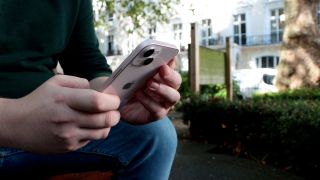Apple is now using more recyled products than ever - even gold
Apple is now using recycled gold in the iPhone for the first time

Apple has expanded the use of recycled materials and rare metals in the iPhone, Mac, and other devices as part of its efforts to reduce the environmental impact of its products.
For the first time Apple has introduced certified recycled gold into its supply chain and has doubled the use of recycled tungsten, rare earth elements and cobalt.
Nearly 20% of all material used in Apple’s products was recycled last year, while the amount of plastic used in its packaging has dropped to just 4%.
iPhone recycle
Apple plans to be carbon neutral by 2030 and already uses clean energy to power its global facilities. The company will also develop low carbon product designs, introduce recycling initiatives, and lower its own electricity needs.
This means that within a decade, every iPhone, iPad or Apple device sold will have net zero climate impact.
“As people around the world join in celebrating Earth Day, we are making real progress in our work to address the climate crisis and to one day make our products without taking anything from the earth,” said Lisa Jackson, Apple vice president of Environment, Policy, and Social Initiatives.
“Our rapid pace of innovation is already helping our teams use today’s products to build tomorrow’s, and as our global supply chain transitions to clean power, we are charting a path for other companies to follow.”
Are you a pro? Subscribe to our newsletter
Sign up to the TechRadar Pro newsletter to get all the top news, opinion, features and guidance your business needs to succeed!
To reduce the need to mine for these precious metals, Apple has made its devices easier to repair and refurbish so that they can be reused, while it has also invested in technology to extract elements from devices that are at the end of their usable life.
The company’s ‘Daisy’ robot can take apart 12 models of iPhone, while the ‘Dave’ robot disassembles Taptic engines to recover magnets, tungsten, and steel. The newest addition is ‘Taz’ which uses shredders to separate magnets from audio modules and recover metals.
Apple says its robots can extract the same amount of gold and copper from one metric ton of components as it would from 2,000 metric tons of mined rock.
Most recently, Apple used the first industrially-produced carbon-free aluminium to build the iPhone SE. The aluminium was created using a new smelting process created using funds from Apple’s $4.7 billion Green Bond investments into low-carbon and recycling technologies.
Steve McCaskill is TechRadar Pro's resident mobile industry expert, covering all aspects of the UK and global news, from operators to service providers and everything in between. He is a former editor of Silicon UK and journalist with over a decade's experience in the technology industry, writing about technology, in particular, telecoms, mobile and sports tech, sports, video games and media.
Most Popular

